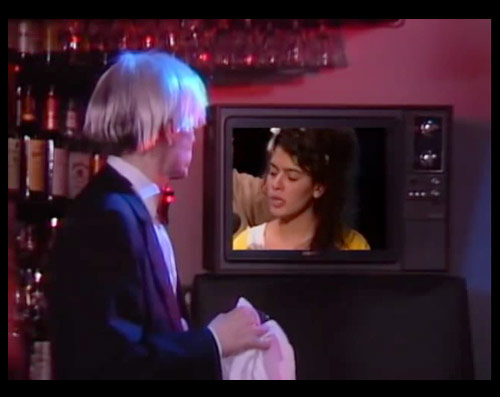In 1946 the great Russian composer Sergei Prokofiev was at the height of his success in the Soviet cultural world, but the state of his health was falling.
Only a year before, in the Great Hall of the Moscow Conservatory, Prokofiev had conducted the glorious premier performance of his widely praised Fifth Symphony. “The hall was probably lit as usual,” remembered the pianist Sviatoslav Richter, who was there, “but when Prokofiev stood up, it seemed as though the light poured down on him from on high. He stood there, like a monument on a pedestal.” But a few days later Prokofiev fainted and took a terrible fall, injuring his head and nearly dying as a result. The diagnosis was severe high blood pressure. Prokofiev’s doctors advised him to move away from Moscow to someplace quiet, so in the summer of 1946 he purchased a dacha in the wooded suburb of Nikolina Gora.
A short time later a government film crew visited the 55-year-old Prokofiev at his new home. The clip above is one of two surviving takes, according to Simon Morrison of Princeton University, author of The People’s Artist: Prokofiev’s Soviet Years. In the film, Prokofiev sits at the piano and plays a selection from one of the waltzes in his ballet Cinderella, which had premiered the previous fall at the Bolshoi Theatre. The composer then walks over to his desk and is asked to say a few words about what he is working on. His reply, as translated on YouTube:
Well, right now I am working on a symphonic suite of waltzes, which will include three waltzes from Cinderella, two waltzes from War and Peace and one waltz from the movie score Lermontov. The War and Peace has just been brilliantly produced in Leningrad, where the composer Cheshko made an especially noteworthy appearance as a tenor, giving a superb performance in the role of Pierre Bezukhov. Besides this suite, I am working on a sonata for violin and piano [No. 1 in F minor], upon completion of which I will resume work on the Sixth Symphony, which I had started last year. I have just completed thre suites from the Cinderella ballet and I am now turning the score over to copyists for writing the parts, so that most likely the suites will already be performed at the beginning of the fall season.
The video concludes with a fragment of silent footage which, according to Morrison, shows Prokofiev playing the cadenza of the finale of his Third Piano Concerto at Moscow in 1927 with “Persimfans,” an early Soviet orchestra that operated without a conductor, in keeping with the proletarian ideals of the revolution. The rare films offer a fascinating glimpse of the great composer’s playing technique. As Morrison told us in an email:
The footage taken at Nikolina Gora clearly shows that he had massive hands, fluid (if a little rusty) technique, and awkwardly rigid posture. He plays from the forearms down, metronomically, with an ease and finesse that indisputably contributed to his technique of chromatic displacement (playing music in one key or tonality but then inflecting it with pitches from other tonal areas). His was an intuitive manner of composition, influenced by the natural feel of the keyboard under his hands–slide-slipping between black and white keys, as shadows of one another.
Less than two years after the Nikolina Gora newsreel footage was made, Prokofiev’s life took a bad turn. On February 10, 1948 he was accused, along with Dmitri Shostokovich and others, of “formalism,” which the pianist and Prokofiev scholar Boris Berman describes as “a political libel in the guise of an aesthetic term.” Formalist art was viewed as being elitist and “undemocratic” for its preoccupation with form over content. As a result, Prokofiev and the others were unable to perform or broadcast their work. And just ten days after his denunciation, Prokofiev’s wife Lina was arrested and charged with “espionage” for trying to send money to her mother in Spain. She was sentenced to 20 years in prison. Stress from the crises caused Prokofiev’s health to deteriorate further, and on March 5, 1953 he died from a cerebral hemorrhage. Joseph Stalin died the same day.
h/t Matthew Barnes
Related content:
Tchaikovsky’s Voice Captured on an Edison Cylinder (1890)


